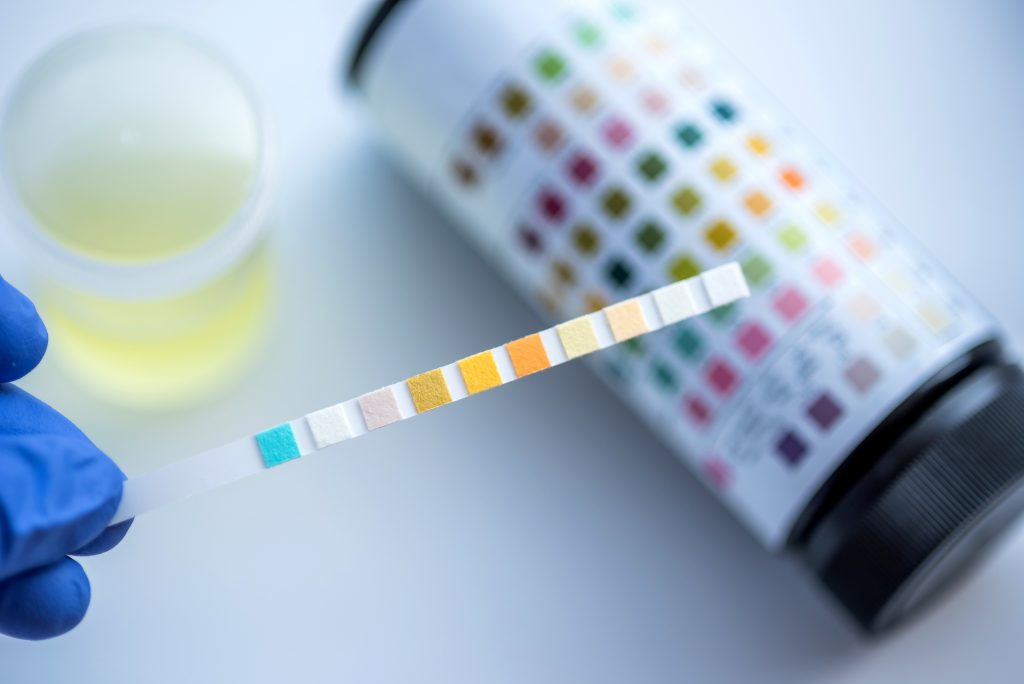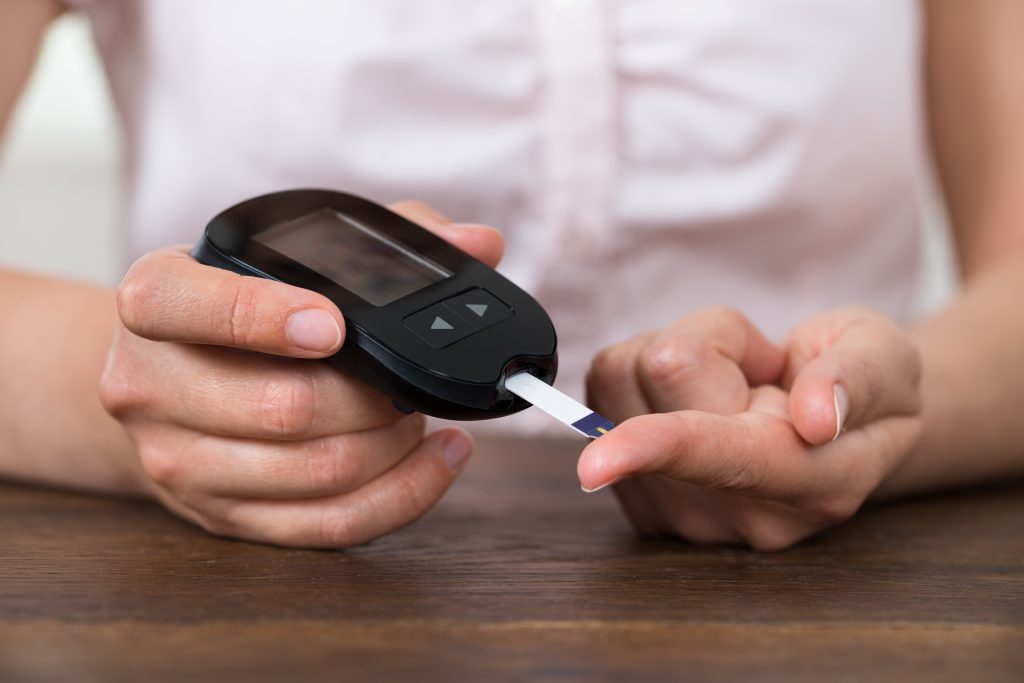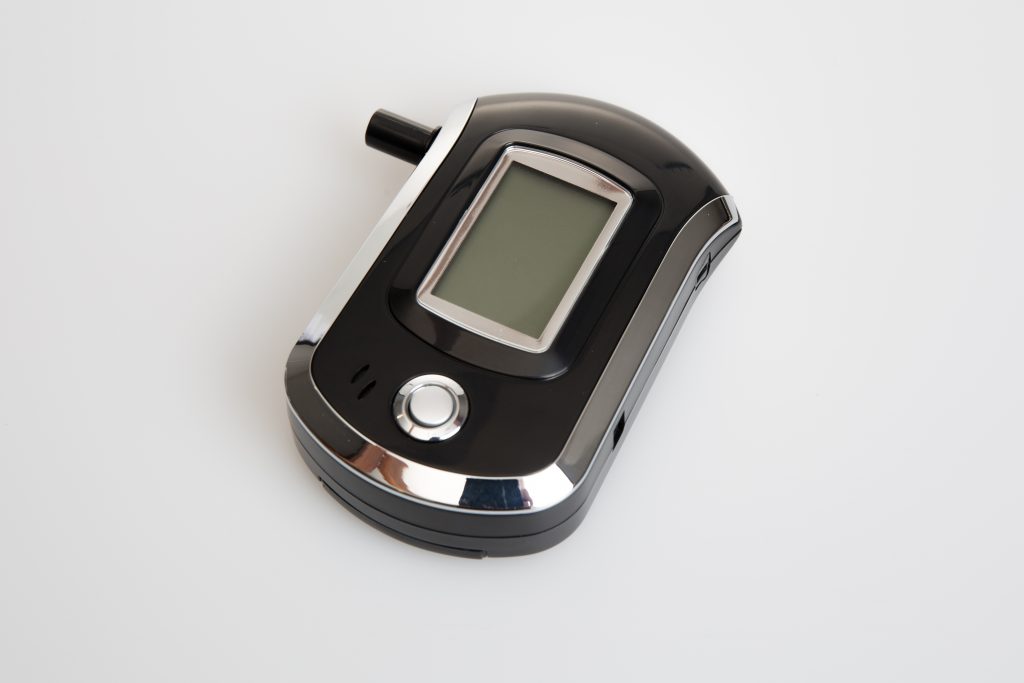When starting a keto diet, pretty much everyone gets focused on their ketone levels. It makes sense. They are concrete measurements of progress and most of us are goal-oriented. By measuring your ketone levels, you can determine if you’re burning fat on Keto. It’s instant validation. Because of this, some people become obsessed with ketone levels. If their ketones aren’t high enough, they think they’re failing. But that’s not necessarily the case. It’s not a competition, and higher ketone levels aren’t always better.
How can you measure ketone levels?
You can measure your ketone levels during ketosis in one of three ways:
1. Urine ketone strips
Urine testing strips are cheap but measuring ketones in the urine rather than in the breath or blood tends to be less accurate than ketones. The results from urine testing strips also reflect ketone levels over the past few hours rather than at the time of testing. Testing ketones in the urine is good if you just want a rough idea of the level of ketosis you’re hitting.

Pros
- Cheap – Especially when we compare them to blood ketone monitors.
- Easily available – You can get them in most pharmacies and, of course, online.
- Non-invasive – You don’t have to get a blood sample or anything like that. You just test your pee.
Cons
- Reliability – After a few weeks of being in ketosis, you stop producing ketones within your urine, or at least the number goes down, so this method starts becoming ineffective. For some people, it remains effective, for others it doesn’t. It’s up to you to do the tests, but if you’re starting to get negative results, it doesn’t necessarily mean you’re not in ketosis.
- Doesn’t tell you how deep the ketosis is – Whilst it provides a graded scale for measuring ketones, it doesn’t necessarily correspond with the number of ketones in your blood, because the result can depend on your hydration levels. This means you can’t really use it for monitoring the height or intensity of the nutritional ketosis; it only shows you whether you’re in ketosis or not.
In summary, it’s a really cheap, easy way of getting started with monitoring, but just be aware it may not last.
2. Blood ketone tests:
Blood ketone tests can be performed using certain blood glucose meters that have been specifically designed to test for ketones. Blood tests are the most accurate method of measuring ketone levels but the cost of the test strips is relatively expensive if you intend to test your ketones on a regular basis.

Pros
- Accuracy – This is probably the most accurate of all three methods, as it basically gives you a number that corresponds to your blood ketone level. This means it’s a very precise measurement of how high your ketone levels are.
- Easily available – You can get these monitors in most pharmacies and, of course, online.
Cons
- Expense – While the monitor is quite cheap to buy, the actual strips that you have to put in it are quite expensive.
- Invasive – you do need to prick your finger to obtain blood for the test, so it can be uncomfortable.
In summary, this is probably the most accurate and most expensive option for measuring your ketone levels, and you do need to put up with a bit of discomfort if you use it.
3. Breathalyser:
It is possible to measure ketones on the breath. The method is not as accurate as blood ketone tests but is better than urine test strips. Another advantage of using a breathalyser is that it involves a single up-front cost, which means that once you have the device, you can test your ketone levels as often as you wish.

Pros
- No ongoing costs – While the device is quite expensive to buy, you don’t have to keep replacing strips as you do with the blood ketone monitor.
Cons
- Initial cost – It is quite an expensive piece of equipment to buy.
- Difficult to use – You have to take a very deep breath because the highest ketone concentrations are at the very depth of your out-breath. Supposedly, if you get good at that, it’s a reliable measure, but I couldn’t get it to work accurately, no matter how much I tried.
In summary, this can be useful for people looking to seriously understand how well they’re achieving ketosis throughout the day.
When to measure ketones?
When and how often to test ketones will depend on what you’re looking to find out. If you’re looking to compare whether you’re keeping in ketosis from day to day or week to week, then it makes sense to test at the same time (or times) of day. This will ensure you get consistent results.
As ketones vary throughout the day and are affected by different types of meals and exercise, you may want to test at different times throughout the day to see how your level of ketosis varies. The ketone breathalyser is very useful for this as you don’t pay for each test as you do with say blood ketone testing strips.
In fact, Remember that it’s not strictly necessary to test ketones at all when you’re following the Keto diet. Many (maybe even most) Keto aficionados gauge whether or not they’re in ketosis based on what their body is doing and how they feel. Reduced hunger and more energy? You’re probably in ketosis!
Biohackers and followers of the “precision nutrition” movement test their ketones following every meal to get a sense for which foods and activities correlate to different levels of ketosis for their particular bodies. But most people following a Ketogenic way of eating find testing multiple times a day to be overkill. It’s a lot more typical to test once a day over the first couple of weeks, and then once a week after that. This schedule provides reassurance that you’re on the right track without feeling like you’re constantly taking measurements.
What level of ketones indicates ketosis?
Ketosis means that ketones are elevated in the body, usually in the blood. But what level of blood ketones officially marks ketosis?
It depends on who you ask, but the general consensus is that ketosis starts at 0.5 mmol/L BHB. This is, to be clear, a measurement of beta-hydroxybutyrate circulating in the blood.
Nutritional ketosis refers to the type of ketosis promoted by a high-fat low-carb Ketogenic diet. As a general rule, nutritional ketosis starts at around 0.5 mmol/L and ends around 3.0 mmol/L.
Above 3.0 mmol/L and up to about 7 or 8 mmol/L is still physiologic, but one enters the realm of medically therapeutic ketosis. These higher levels of ketones are usually achieved by fasting, protein restriction, exercise, exogenous ketone supplementation, or some combination.
When ketone levels rise above 7 or 8 mmol/L, it may indicate a dangerous condition called ketoacidosis. (Note: ketoacidosis may begin as low as 3 mmol/L for type 1 diabetics). Ketoacidosis primarily plagues type 1 diabetics because they lack the proper mechanisms to shut down fat-burning. It’s rarely a concern for healthy people following a Keto diet.
The target ketone levels for weight loss
The sweet spot for weight loss is 1.5 to 3.0 mmol/l. This level of nutritional ketosis is recommended by researchers Stephen Phinney and Jeff Volek. Ketone levels of 0.5 to 1.5 mmol/l, light nutritional ketosis, is also beneficial although not to the degree of full nutritional ketosis. The longer you stay within these levels, particularly within the sweet spot of nutritional ketosis, the more fat you will burn and the more effective your weight loss efforts will be.
If you are starting (or re-starting) a ketogenic diet, it can take up to a few weeks for your body to switch to using ketones as its main fuel source so don’t give up too early.
However, Remember that ketone levels aren’t everything. When you measure your ketones and get a positive result, it can be a real confidence booster. It says you’re going in the right direction.
Taking the interpretation beyond that, however, may be problematic. First of all, science still hasn’t figured out the optimal level of ketones. We can say with some confidence that you don’t want 0 mmol/L BHB (which means you’re probably not burning fat) and that 0.5 to 3.0 millimolar BHB appears to be the green zone for nutritional ketosis. But we can’t say that 1.8 mmol/L is better than 0.8 mmol/L.
In fact, some folks see declines in blood ketones overtime on Keto, despite positive results in all other areas. Why is this happening? It might be a beneficial increase in ketone utilization. In other words, fewer ketones are in the blood because more ketones are being utilized by muscle and brain tissue. It might be a sign of Keto-adaptation.
In addition, lifestyle factors like fasting and exercise can impact ketone levels, temporarily skewing levels one way or the other.
Simply fasting overnight (in other words, sleeping) may cause ketone levels to rise by .1 to .5mM. Longer fasts of up to 48 hours of fasting may result in ketone levels of 1 – 2mM, even if you weren’t in ketosis beforehand. Extended fasts may increase ketone levels even further.
Conclusion
Remember, ketone levels aren’t everything. You didn’t go Keto to hit a certain level of ketones, did you? You went on Keto to improve your health. Pay attention to energy levels, appetite, sleep, body weight and other health metrics first—and ketones second. This approach will serve you well in your quest for health and happiness



